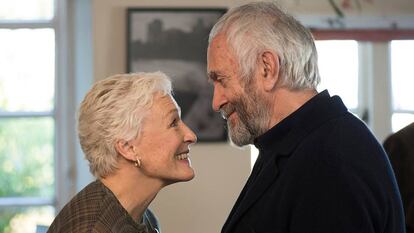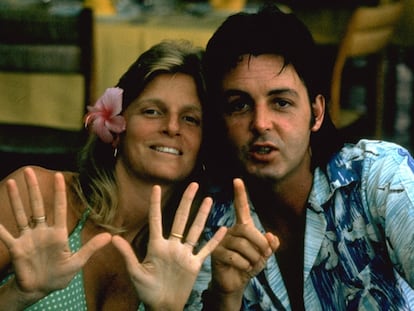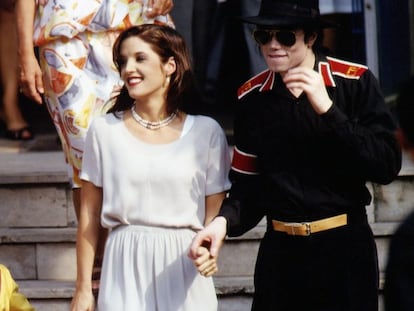A twist on marriage and its (almost) infinite possibilities
‘Parallel Lives: Five Victorian Marriages’ is one of many books that asks what place the couple should occupy in the 21st century


If life is a story, what happens when you decide to share that tale? The fact that marriage, or the idea of it as a possibility full of other possibilities, is making a comeback in contemporary fiction and nonfiction is not an accident. At a time when boundaries are being explored — and in so doing reimagining that which was meant to dictate them — it is not unusual that marriage, the classic form in which a couple — which need not be limited to two people (and, indeed, was not, even in Victorian times) and depended far less on what happened in bed and sex between its members — is being examined anew. The Bostonian marriage, in which middle-aged women happily served as life partners, sharing their lives without further ado, is once again under scrutiny. In a society in which the self predominates, what happens when one gives another person one’s self? Does marriage pose a danger for a self-obsessed contemporary society, that is, one full of individuals who claim to be unique and unencumbered?
In 1983, American scholar, literary critic, essayist and biographer Phyllis Rose published a suggestive and illuminating book, titled Parallel Lives, in which she analyzes five Victorian marriages. One of the couples under study was Charles Dickens and Catherine Hogarth. Their marriage was a small torment that began as a torrid love story, a tale of what happens when an orphan — who only wants to attract attention because he needs infinite love — finds someone to care for and, above all, lets someone care for him. It continued as a happy family, with Dickens making cakes appear in top-hats for his ever-growing brood of children and commissioning portraits of them to take with him on his world tours, on which Catherine accompanied him. But the marriage broke up after a slew of infidelities. From the safety of home, Dickens dreamed of escape and of having nowhere to return to.

Agreeing with philosopher and economist John Stuart Mill — whose marriage is analyzed in Parallel Lives and consisted of three people, including his wife’s lover— Rose believes that marriage “is the primary political experience in which most of us engage as adults.” In fact, it was her interest in discovering how power is managed between men and women in that microcosmic relationship that led her to write the book that writer Nora Ephron says she read every four years in search of some kind of understanding. In the end, that’s what it’s all about: understanding what good or evil can make you share your life with someone, as well as how that evil could be avoided, or that good expanded. From Swedish playwright August Strindberg’s classic Married — a master class on couples’ psychic cannibalism — to Maggie O’Farrell’s recent The Marriage Portrait to Meg Wolitzer’s devastating The Wife, the history of literature is replete with direct analyses of this omnipresent relationship.
The stories included in Rumena Bužarovska’s My Husband delve into the lives of 11 marriages; since the narrators are women, the role of men is studied and criticized. It reflects the most absurd and, at the same time, most human experience of marriage, with its pettiness and the sense of self that often involves ignoring the other person. Bužarovska takes aim at everything that turns marriage into a dead end, the hermeticism stemming from the protagonist’s guilt over her decision; at the time, she thought it would be a great idea to share her life with her husband, but, over time, she could only begin to hate him as much as she inevitably hated herself. The mirror factor is central to these stories, just as it was in the 1970s film directed by Ingmar Bergman’s 1970s film, Scenes from a Marriage, which was revived in a new production in mid-2021: Scenes from a Marriage is a drama that makes total sense and no sense at the same time.
Back in 2011, when Jeffrey Eugenides, the author of The Virgin Suicides, published The Marriage Plot, marriage was conceived of as an ideal of unattainable perfection, but now it is considered a lost and outdated, insufficient or reactionary institution, and marriage is clearly being reinvented. Begoña Méndez and Nadal Suau’s essential essay El matrimonio anarquista (The Anarchist Marriage) — constructed from experimental correspondence — contended that, if marriage were emptied of meaning, it could be given a new one by making it what each couple intended it to be. Méndez invoked Julia Kristeva and Philippe Sollers’ tome On Marriage as a Fine Art, saying that “two people who fall in love are two childhoods that understand each other”; she went on to argue that everything that followed from there — including the possibility of founding a planet of two that began with saying “I do” — must not be governed by preconceptions. That is to say, marriage can be anything, and it should be.
But hasn’t it been that way from the beginning? That’s the impression one gets when reading Parallel Lives and discovering that, for example, marriage’s connection with sex and attraction only emerged with Sigmund Freud and the advent of psychoanalysis; before that, the institution had mutated in any number of ways, because it was almost a social class, something that existed as a framework, but one that could be tweaked from within. Each union was then its own particular little world, a little world in which it called the shots. Such was the case of writer John Ruskin, who seemed to seek out all kinds of lovers for his wife so that she would leave him alone; they never consummated the marriage. Indeed, their wedding night was a Victorian landmark, as busy as he was traveling with his parents all over the world. Then, as now, there was nothing to take seriously. Once again, marriage’s (almost) infinite possibilities were being explored.
Think of Queen Victoria, who decided right away that she was not going to spend more than three days on her honeymoon. She was horrified by the thought of being bored with her husband. So, she returned to the palace. For his part, novelist Charles Kingsley wrote passionate missives to his bride-to-be in which he made it clear that if she didn’t ever feel like seeing him naked, she didn’t have to. The Kingsleys spent the first four weeks of their marriage getting comfortable with each other. In a sense, they were always the same thing.
Equality, Rose says, is the purpose of any discussion of the idea of marriage. To what extent can power be shared in the right measure, so that both parties feel equally represented and respected and occupy the exact same space? According to the author, the answer lies in the marriage of philosopher Thomas Carlyle and writer Jane Welsh, “where equality consists — as perhaps it must in an imperfect time such as [theirs], or ours — in perpetual resistance, perpetual rebellion.”
Sign up for our weekly newsletter to get more English-language news coverage from EL PAÍS USA Edition
Tu suscripción se está usando en otro dispositivo
¿Quieres añadir otro usuario a tu suscripción?
Si continúas leyendo en este dispositivo, no se podrá leer en el otro.
FlechaTu suscripción se está usando en otro dispositivo y solo puedes acceder a EL PAÍS desde un dispositivo a la vez.
Si quieres compartir tu cuenta, cambia tu suscripción a la modalidad Premium, así podrás añadir otro usuario. Cada uno accederá con su propia cuenta de email, lo que os permitirá personalizar vuestra experiencia en EL PAÍS.
¿Tienes una suscripción de empresa? Accede aquí para contratar más cuentas.
En el caso de no saber quién está usando tu cuenta, te recomendamos cambiar tu contraseña aquí.
Si decides continuar compartiendo tu cuenta, este mensaje se mostrará en tu dispositivo y en el de la otra persona que está usando tu cuenta de forma indefinida, afectando a tu experiencia de lectura. Puedes consultar aquí los términos y condiciones de la suscripción digital.
More information
Últimas noticias
Most viewed
- Sinaloa Cartel war is taking its toll on Los Chapitos
- Oona Chaplin: ‘I told James Cameron that I was living in a treehouse and starting a permaculture project with a friend’
- Reinhard Genzel, Nobel laureate in physics: ‘One-minute videos will never give you the truth’
- Why the price of coffee has skyrocketed: from Brazilian plantations to specialty coffee houses
- Silver prices are going crazy: This is what’s fueling the rally










































